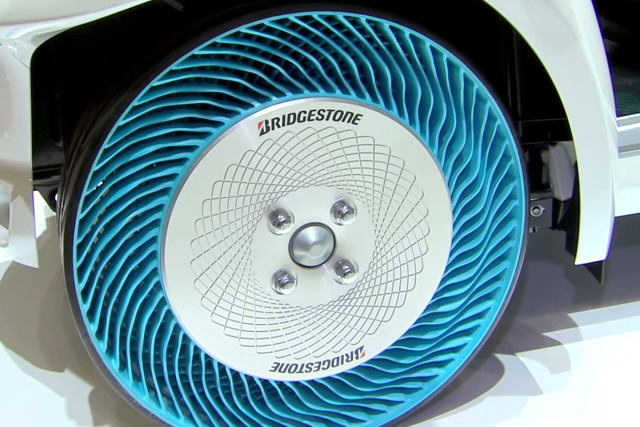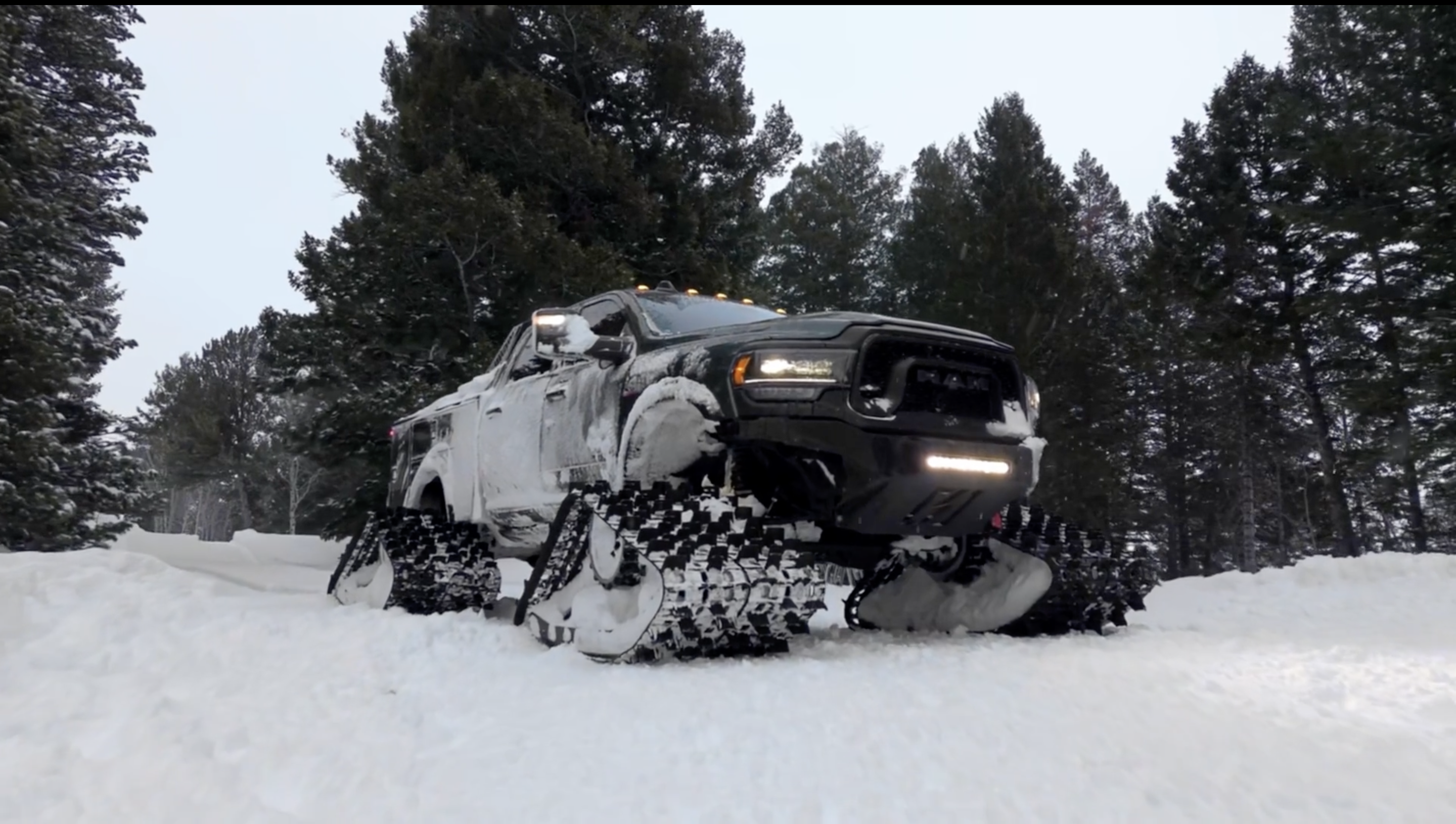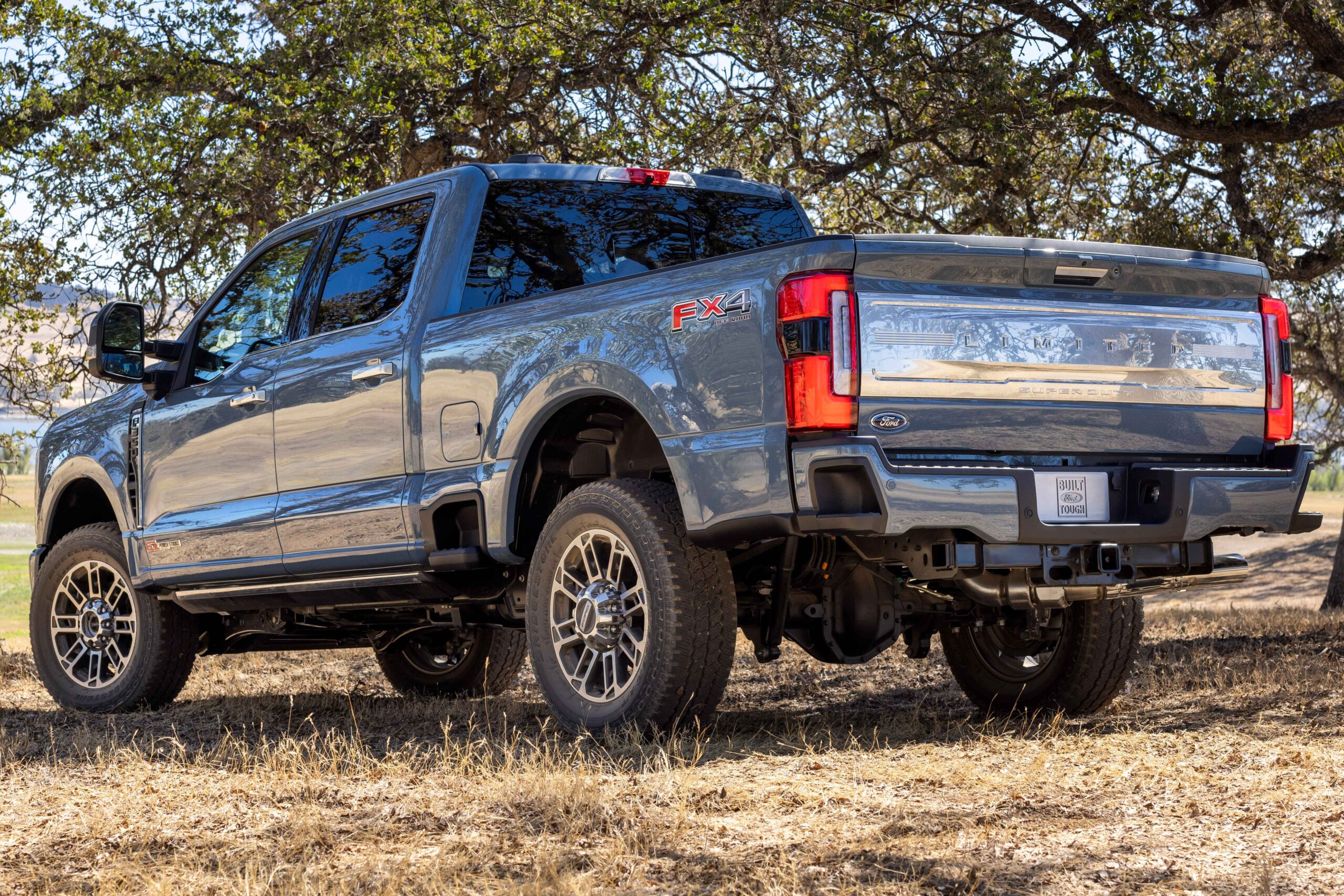Are you constantly checking the air pressure in your tires to make sure they are properly inflated. Do you have trouble knowing exactly what pound-force per square inch (psi) of inflation your tires should be at to properly support the load you’re carrying? Well, all of your concerns about inflation levels or air leaking from your tires are soon to be over if companies such as Bridgestone move forward with the sort of tire technology seen in the video above.
 The video report from CNET’s Brian Cooley on Bridgestone’s new and still experimental air-less tire is a look into a revolutionary idea, that although not unique, is a different take on the run-flat concept of tire design and manufacturing. As we learn in the video, it’s not just a tire, but a “wheel assembly” with a large diameter hub surrounded by two networks of vanes made from a thermoplastic material radiating out from the hub. The thermoplastic vanes are stiff enough to support the vehicle’s weight, yet compliant enough to allow the tread belt to deform and roll over road surface irregularities with out causing a disruption of the chassis.
The video report from CNET’s Brian Cooley on Bridgestone’s new and still experimental air-less tire is a look into a revolutionary idea, that although not unique, is a different take on the run-flat concept of tire design and manufacturing. As we learn in the video, it’s not just a tire, but a “wheel assembly” with a large diameter hub surrounded by two networks of vanes made from a thermoplastic material radiating out from the hub. The thermoplastic vanes are stiff enough to support the vehicle’s weight, yet compliant enough to allow the tread belt to deform and roll over road surface irregularities with out causing a disruption of the chassis.
One of the primary benefits comes from the fact that a physical but flexible structure supports the weight of the vehicle and its cargo, there is no possibility of having a flat tire if an object punctures the outer tread belt. However, there are some questions that arise.
What happens if the empty spaces between the vanes become filled with debris such as mud, rocks, or snow? Will this throw off the balance and create a wobble and uneven wear, or a rough ride? How expensive is this technology, and how much will it add to the already high cost of vehicles? There is a lot to think about, and no doubt some trade-offs with this new tire technology. What do you think? Let us know in the Comments section below.


















